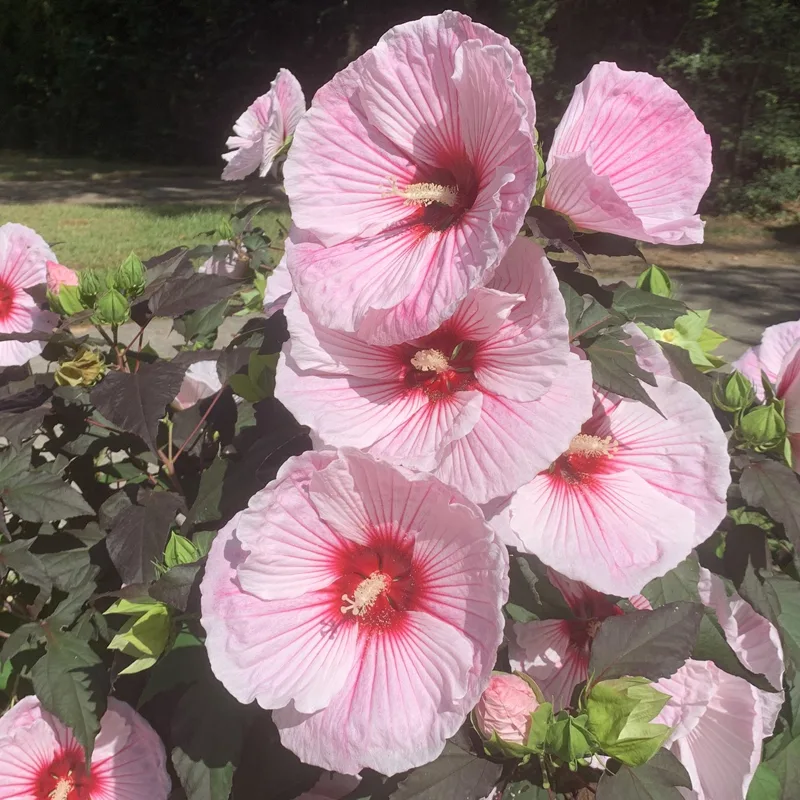The Remarkable Phellodendron: A Personal Exploration
My name is Ferb Vu, and I’ve always been fascinated by the natural world, particularly the diverse and often overlooked realm of plants. One genus that has captured my attention recently is Phellodendron, commonly known as the cork tree. Native to east and northeast Asia, these deciduous trees are members of the Rutaceae family, which also includes citrus fruits. But unlike their juicy relatives, Phellodendron species are prized for their bark, which has a long history of use in traditional medicine.
A Closer Look at the Cork Tree
The name Phellodendron translates to “cork tree” in Greek, a fitting description given the thick, corky bark that characterizes many species within this genus. This distinctive bark is often deeply furrowed and can range in color from grayish-brown to nearly black. But the unique features of Phellodendron don’t stop at the bark. These trees also boast beautiful pinnate leaves, composed of multiple leaflets arranged along a central stem. In the fall, the foliage transforms into a stunning display of golden yellow, adding a vibrant touch to the landscape.
Phellodendron species are dioecious, meaning individual trees are either male or female. Inconspicuous yellow flowers emerge in clusters during the spring, followed by small, round, berry-like fruits on female trees. These fruits, while not particularly appealing to humans, are a valuable food source for birds.
Species within the Genus Phellodendron
The genus Phellodendron encompasses several species, each with its own unique characteristics and distribution. Here are:
- Phellodendron amurense (Amur cork tree): is a deciduous tree native to northeastern Asia, including China, Korea, and Japan. This tree is notable for its corky, textured bark, which has a spongy feel and deeply fissured appearance, providing it with excellent insulation and unique aesthetic appeal. Reaching heights of up to 15 meters, it has dark green, pinnately compound leaves that turn bright yellow in autumn, making it a beautiful landscape addition. Traditionally, Phellodendron amurense has been valued in East Asian medicine for its bark, which contains berberine, a compound used for its antibacterial and anti-inflammatory properties. However, this species is invasive in some regions, where it competes with native flora.
- Phellodendron chinense (Chinese cork tree): is a similar but smaller deciduous tree, usually growing up to 10 meters, and is native to China, Taiwan, and Vietnam. It shares some characteristics with Phellodendron amurense, such as compound leaves and corky bark, though its leaves are often smaller and more delicate in appearance. The Chinese cork tree produces small, black drupes, which are attractive to birds and beneficial for wildlife but can contribute to invasiveness outside its native range. Traditionally, its bark and fruit have been used in Chinese herbal medicine, particularly for treating digestive and skin conditions, and its resilience and distinct appearance make it a unique ornamental choice.
Traditional Uses and Modern Applications
For centuries, the bark of Phellodendron trees, particularly P. amurense and P. chinense, has been a staple in traditional Chinese medicine and other Asian healing systems. Known as “Huang Bai” in Chinese, the bark is renowned for its anti-inflammatory, antibacterial, and antiviral properties. It has been used to treat a wide range of ailments, including:
- Gastrointestinal issues: diarrhea, dysentery, abdominal pain
- Skin conditions: eczema, psoriasis, acne
- Infections: meningitis, tuberculosis, urinary tract infections
- Other: arthritis, high blood pressure, liver disease
Modern research has confirmed many of the traditional uses of Phellodendron bark. Studies have shown that compounds found in the bark, such as berberine, palmatine, and jatrorrhizine, possess potent biological activities. These compounds have demonstrated:
- Antioxidant effects: protecting cells from damage caused by free radicals
- Anti-inflammatory actions: reducing inflammation throughout the body
- Antimicrobial properties: inhibiting the growth of bacteria, viruses, and fungi
- Anticancer potential: inhibiting the growth of certain cancer cells
Today, Phellodendron bark extract is available in various forms, including capsules, tablets, and topical creams. It is becoming increasingly popular as a natural remedy for various health concerns.
Cultivation and Conservation
Phellodendron trees are relatively easy to cultivate, adapting to a variety of soil types and climates. They prefer full sun to partial shade and are generally hardy and low-maintenance. However, it’s important to be aware that these trees can grow quite large, so adequate space is necessary.
While Phellodendron species are not currently considered endangered, sustainable harvesting practices are essential to ensure their long-term survival. Overexploitation of wild populations for medicinal purposes could threaten these valuable trees. Cultivation and responsible harvesting methods are crucial for preserving Phellodendron for future generations.
My Personal Reflections
As I continue to learn about Phellodendron, I am struck by its versatility and resilience. This genus exemplifies the interconnectedness of nature, providing ecological benefits as a food source for wildlife and offering valuable medicinal properties for humans. The rich history of Phellodendron in traditional medicine highlights the deep connection between humans and the natural world. It serves as a reminder of the importance of preserving biodiversity and respecting the delicate balance of our ecosystems.
I am eager to further explore the potential of Phellodendron and its role in promoting human health and environmental sustainability. This fascinating genus holds promise for future discoveries and applications, and I am excited to witness its continued impact on the world.
If i die, water my plants!


